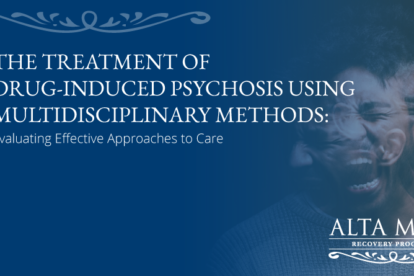
Dysthymic Disorder and Drug Addiction
Dysthymic disorder is a form of low-grade, chronic depression that can endure for years if treatment is not provided. Dysthymic disorder, or dysthymia, produces the same feelings of emptiness, meaninglessness, and low energy and motivation as major depression, but in a more muted form. Substance use disorders are an added complication for many people with dysthymic disorder, and when both conditions are present dual diagnosis treatment programs offer the best hope for a lasting and sustainable recovery.
What Are Drug Addiction and Dysthymic Disorder?
Dysthymic disorder (dysthymia) is a condition that mimics the symptoms of major depression, but in a milder and less debilitating form.
Also known as persistent depressive disorder, dysthymic disorder is marked by chronic feelings of emptiness, low energy and low motivation that seldom if ever relent. Unlike major depression, dysthymia does not severely inhibit daily functioning, and people who have it are normally able to hold down jobs and manage their personal and financial affairs.
But over time, persistent depressive disorder saps the mental, emotional, and physical strength of those who experience it. As they struggle to keep things together they may become desperate for answers, searching for something—anything—to fill the void.
Treatment for depression would be the ideal solution. But many people don’t associate dysthymia with clinical depression, and instead of asking for help they choose to self-medicate with drugs and alcohol, which puts them at high risk for addiction.
Substance abuse problems are common among people who experience the chronic symptoms of dysthymic disorder, and without professional help their lives may completely fall apart. They may hold it together for a while, but eventually the combination of chronic depression and frequent substance use will be too much to overcome.
At that point, their need for treatment becomes more acute than ever.
Dysthymic Disorder Facts and Statistics
Dysthymic disorder is less common than major depression. The yearly incidence rate for the latter is nearly seven percent, while dysthymic disorder occurs in about 1.5 percent of American adults in any given year. Interestingly, about half of all cases of dysthymia are classified as severe, which means they do cause some degree of life disruption despite their reputation as a non-disabling disorder.
In 2019, 49 percent of people with substance use disorders (19.2 million adult Americans) also had at least one co-occurring mental health disorder—with depression well represented.
Approximately one-third of people with depression also have a drug or alcohol use disorder, and vice versa, and in one study of people seeking treatment for substance use disorders 25 percent met the criteria for dysthymia specifically.
Symptoms and Diagnosis of Addiction and Dysthymic Disorder
Regardless of type or intensity, depression has unique symptoms that separate it from other mental health disorders.
The emotional and behavioral signs of dysthymia include:
- Lack of energy
- Chronic fatigue
- Flat or muted emotional responses
- Loss of capacity for pleasure
- Social isolation and withdrawal
- Chronic feelings of guilt, inferiority, and helplessness
- Persistent low-level anxiety
- Memory and learning problems
- Inability to initiate or finish tasks
- Pessimism about the future
- Gradual decline in capacity to perform and function
Mental health professionals will diagnose dysthymic disorder based on the presence of certain core symptoms, which include the following:
- Persistent feelings of despair and emptiness
- Poor self-esteem and a lack of self-confidence
- Sudden changes in appetite, leading to weight gain or loss
- Insomnia, or sleeping at odd hours
- Irritability, moodiness
- Lack of focus and concentration
- Trouble with decision-making, marked by indecisiveness and/or impulsivity
Two or more of these symptoms must be reported before a person can be diagnosed with dysthymia, and they must have experienced those symptoms for at least two years. If they’ve continued to function (generally speaking) despite their mental and emotional struggles, a diagnosis of persistent depressive disorder will be chosen rather than major depression.
For a substance use disorder to be diagnosed in someone with dysthymia, the drinking or drug use must occur on a regular basis and must be causing a variety of life difficulties.
The diagnostic criteria for drug and alcohol addiction include:
- Growing tolerance for drugs or alcohol, marked by escalating consumption
- Strong withdrawal symptoms that accompany abstinence
- The presence of cravings for at least one substance being used
- Consumption of drugs and alcohol that frequently surpasses what was planned
- Previous attempts to quit using drugs or alcohol have all failed
- Daily routines are disrupted by drinking or drug use
- Significant investments of time are spent using, acquiring, or recovering from the effects of drugs or alcohol
- Drinking or drug use continues despite its role in creating interpersonal conflicts
- Hobbies, pastimes, and other pleasurable activities are neglected in favor of drugs and alcohol
- Substance use has led to hazardous behaviors
- Substance use continues despite its contribution to various mental and physical health problems
When at least two of these symptoms are reported, a mild substance use disorder can be diagnosed, while six or more means a severe addiction has developed and treatment is urgently needed.
Addiction and Dysthymic Disorder Causes and Risk Factors
Like more severe forms of depression, dysthymia emerges from a life plagued by stress, unhappiness, and unresolved conflicts. It represents a failed attempt to cope by shutting down difficult emotions, but unfortunately when depression develops it impacts every area of a person’s existence. Eventually, chemical imbalances that arise in the emotional center of the brain will deepen a depressed mood, and these alterations in neurological activity are the proximate cause of persistent depressive disorder.
Some of the risk factors that increase the likelihood of dysthymic disorder include:
- Genetics and family history. Having one or more parent with a history of depression boosts the odds for dysthymia.
- Exposure to childhood trauma. Being abused or neglected as a child can set a person up for a lifetime of mental health issues, especially if the feelings evoked by the trauma remain unaddressed in therapy.
- Unhealthy lifestyle. Poor diet, a lack of exercise, overwork, and constant exposure to stress can damage a person’s emotional immune system, leaving them vulnerable to depression.
- A pessimistic or fatalistic outlook on life. This is often a sign of low self-esteem, which is a risk factor for mood disorders.
- Previous history of mental health issues. Depression and anxiety disorders co-occur with exceptional frequency, and research suggests a strong relationship between personality disorders and depressive disorders as well.
Some of these risk factors also increase the odds of substance abuse. For example, drug and alcohol abuse is yet another consequence of a troubled childhood—in community studies, between 14 and 35 percent of adult survivors of severe childhood abuse and neglect had problems with substance abuse at some time in their lives.
Having a previous history of mental illness is also a significant risk factor for substance use disorders. Drug and alcohol abuse are common among people who struggle with mental health problems, including those that co-occur with dysthymic disorder.
Hope is Just a Phone Call Away
866-922-1350Co-Occurring Disorders
Up to half of those diagnosed with an anxiety disorder will experience some form of depression, while 60-70 percent of men and women with depression will have at least one anxiety disorder at some point in their lives. Depressive disorders and anxiety disorders share environmental and neurological risk factors, making each an expression of the same underlying problems.
Studies have also shown a significant link between personality disorders and depression. One study found that nearly two-thirds (64 percent) of people seeking treatment for major depression met the criteria for one or more personality disorders, while a separate study confirmed that people with dysthymia were even more likely to have a personality disorder than those with major depression.
Dysthymic disorder and major depression are assumed to be distinct conditions, but overlap is common. Up to 75 percent of people diagnosed with dysthymic disorder will also experience a period of major depression, and if this happens two or more years after a person develops dysthymia they can be diagnosed with double depression. In other instances, men and women with dysthymia may experience one or two severe symptoms, of the type normally associated with major depression, and that is also classified as double depression.
Of the 51.5 million American adults who had a mental health disorder in 2019, 9.5 million (18 percent) also battled drug or alcohol addiction. This highlights the close association between drug and alcohol use and the disturbing symptoms of mood disorders, anxiety disorders, and personality disorders.
Dysthymic Disorder and Drug Addiction Prognosis
A quality dual diagnosis rehab for treatment of drug addiction is designed to help people with co-occurring substance use and mental health problems overcome the immense challenges they face. Individualized treatment plans will include a comprehensive mixture of individual, group, and family therapy, medication, holistic healing practices, life skills and coping skills classes, and long-term aftercare services that can reinforce the valuable lessons learned during therapy.
Unfortunately, many people with dysthymic disorder fail to realize they have a condition that requires—and will respond to—intervention. But once its presence is recognized and addressed, dysthymic disorder will respond well to therapy and antidepressant medications (if they are prescribed), and evidence-based treatment methods for substance use disorder can also produce results when the person in recovery is serious about getting their life back on track.
Addiction is an added complication for those who have dysthymic disorder. But treatment can make a remarkable difference, as long as all mental, emotional, and behavioral problems are acknowledged and dealt with simultaneously.






